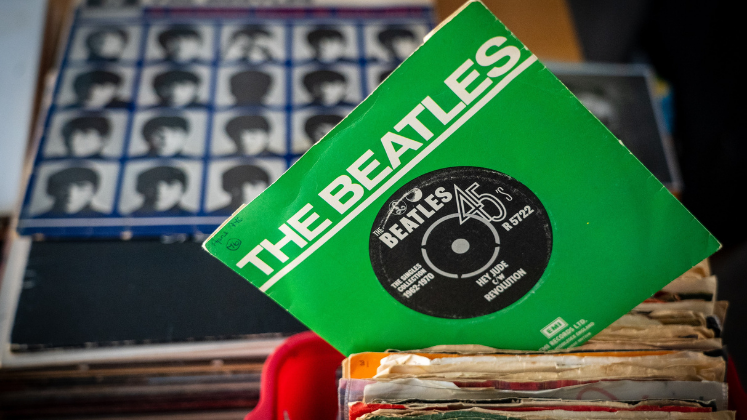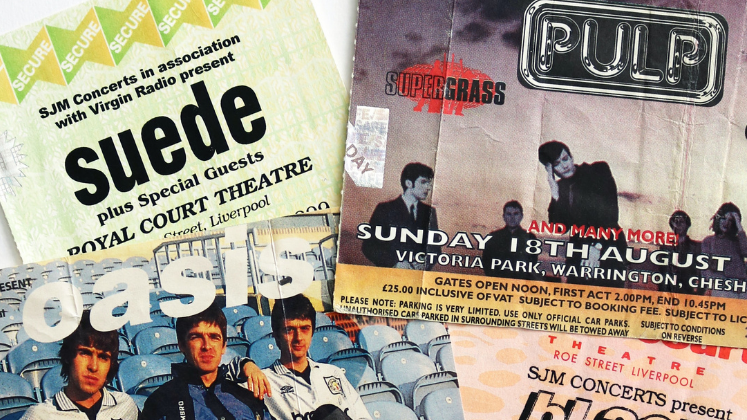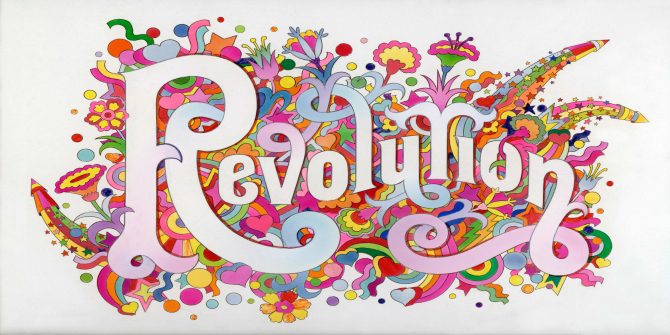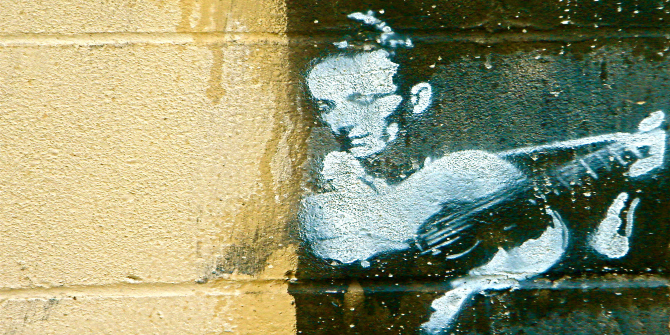In The Beatles and Film: From Youth Culture to Counterculture, Stephen Glynn draws on the Beatles’ five films released between 1964 and 1970 to explore their journey from being at the heart of youth culture to part of the experimentation of the counterculture. Showing the films to be multi-faceted and sometimes contradictory, this readable book is full of rich detail, writes Ruth Garland.
The Beatles and Film: From Youth Culture to Counterculture. Stephen Glynn. Routledge. 2021.
 Find this book (affiliate link):
Find this book (affiliate link): ![]()
The marketing straplines for the new Peter Jackson documentary, The Beatles: Get Back, recently released on Disney+, invite us to ‘Experience the three-part event’ and proclaim that the Beatles ‘have less than three weeks to write and record a new album’. Here, the Beatles are packaged not only as a Disney product but also as a modern reality TV show. True, the Beatles were one of the first globally hyped b(r)ands – the initial riots caused by Beatlemania in October 1963 have been described as a tabloid fiction, for example (Norman, 1981) – but having emerged from the egalitarian culture of post-war Liverpool, they are often associated with the creative expression of the common people of Britain. This six-hour documentary on the making of the album Let It Be (1970) is available only through a monthly subscription to the insatiable American media company’s streaming service. Would the Beatles in their prime have allowed an exclusive association with Disney?
This is the context in which I set out to review Stephen Glynn’s The Beatles and Film: From Youth Culture to Counterculture. Glynn is equally at home discussing popular culture, film, television and music, having written widely about sport, cinema and youth culture. He acknowledges the Beatles as a steady presence throughout his life but resists over-identification or undue critical distance. While recognising their unique achievements, he also positions them as ‘a heavily monetized phenomenon’ that combined cinema and music with a ‘skilfully marketed’ and ‘enraptured youth culture’.
John Lennon claimed that although the Beatles were at the cusp of a wave that created a whole new way of life and thinking, they were not the youth movement itself. This book agrees, arguing that their acquiescence in, then rejection of, youth culture evolved into something more disruptive, if ambivalent: the projection of the values of the counterculture as a branch of popular entertainment.
The book draws on the Beatles’ five films released between 1964 and 1970 to chronologically explore the journey of these four Liverpool musicians from ‘the epicentre of teen-led youth culture’ to ‘the experimentation of the counterculture and beyond’. The analysis is used to examine the idea of youth culture itself. The films are explored across three dimensions: through their initial inception, their reception by audiences and as film texts examined within their social context. It provides rich detail, including new material and ideas, and remains easily readable, despite running to only 100 pages.

Photo by Nick Fewings on Unsplash
The films are presented as multi-faceted and sometimes contradictory. The widely criticised Magical Mystery Tour, for example, is said to draw on film surrealism, satire and the influence of LSD, while also offering merchandise that promoted the official Beatles fan club and reassured their longstanding fan base. With its nod to northern working-class coach outings, it was careful to cast recognised music-hall veterans and variety performers such as Nat Jackley and Shirley Evans. Details like the fact that the film was broadcast on the BBC between a Petula Clark special and a Norman Wisdom film, and that it appeared a few months after Paul McCartney admitted to taking LSD, help explain the disorientation and dismay of the mainstream audience.
The Beatles’ own agency in contributing towards innovative decision-making appears as a factor from the beginning. A Hard Day’s Night was conceived in 1963 as a standard low-budget feature as part of a three-film deal with United Artists. Under the control of the director Dick Lester, whose previous work with the offbeat comedy trio the Goons won the approval of the Beatles, it emerged as a black-and-white fictionalised documentary. It was unique in that its soundtrack consisted solely of music written and performed by the band. As an early multi-media product, it was ‘the first motion picture in history to secure a profit while shooting was still in progress’. As a sign of what was to come, the profits from this UK-produced film all went to the US. This ‘established a funding pattern for the rest of the decade’ (17), a pattern that continues.
The Observer reviewer Penelope Gilliatt was prescient in 1964 in identifying the Beatles’ resilience in the face of overwhelming fame, something which was denied solo performers like Elvis Presley and, more recently, Amy Winehouse. She wrote that the Beatles remained untouched by ‘a series of intensely public dilemmas […] because they cart their private world around everywhere’ (Gilliatt, 12 July 1964). This is a view also espoused in recent reviews of the Get Back documentary. Glynn’s analysis of A Hard Day’s Night’s impact is far-reaching. The Beatles’ interest in their appearance, he states, as exemplified by Paul McCartney’s use of the comb, enabled a new form of male narcissism that changed how men feel, look and think. It also highlighted the embryonic women’s liberation movement. Women are marginalised in the film and remain largely passive and silent but, Glynn suggests, the final ecstatic concert sequence where the boisterous fans react to the band on stage serves as a protest against the double standards of female teen culture.
Given the level of detail provided for the previous four films, and the continuing interest in the film and music of Let It Be (1970) over many decades, the analysis of the Beatles’ final film seems brief at less than nine pages. In contrast with the reviews for Get Back, Glynn notes that although brave, innovative and of historical significance, Let It Be lacked joy, downplayed the role of musician Billy Preston and sidelined George Harrison, although the roof concert remains ‘a joyous reaffirmation of togetherness’ (94). He sees Let It Be as signalling the end of both optimistic youth culture and British pop culture in film (although Derek Jarman’s 1978 film Jubilee might contradict the latter claim).
To return to the theme of Disney, the book recounts how, in 1967, John Lennon in particular ‘vehemently objected to [their manager, Brian] Epstein’s negotiated involvement in Walt Disney’s The Jungle Book’ (57). The vultures in the animation remained scousers, but Disney got the Beatles in the end.
Note: This review gives the views of the author, and not the position of the LSE Review of Books blog, or of the London School of Economics and Political Science. The LSE RB blog may receive a small commission if you choose to make a purchase through the above Amazon affiliate link. This is entirely independent of the coverage of the book on LSE Review of Books.







